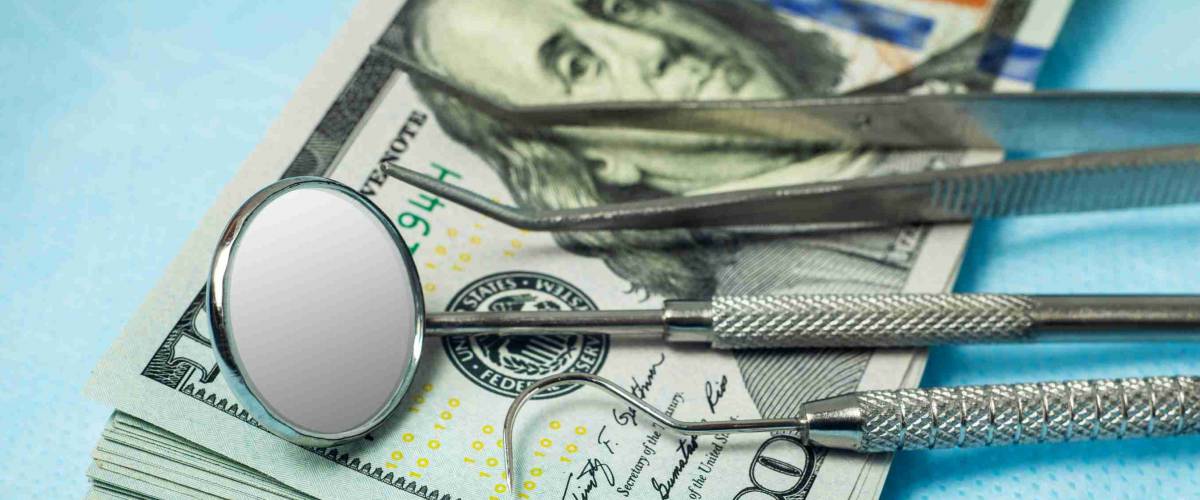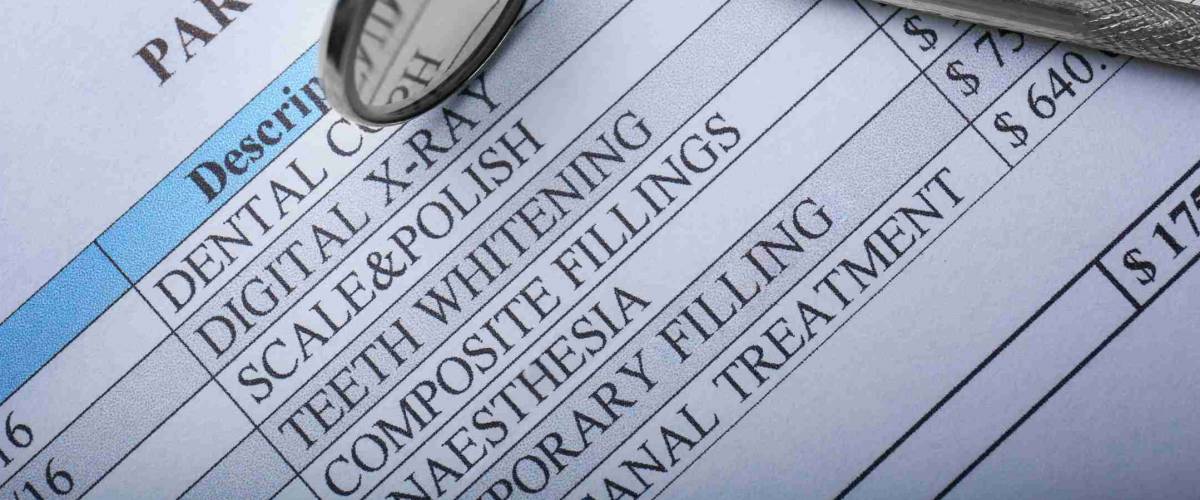Upon hearing the dreaded words, “You need a root canal,” my heart dropped to my toes.
Aside from the anticipation of pain, I knew the procedure was expensive.
Unfortunately, if you have a seriously infected tooth, your only choices are to have a root canal — or lose the tooth.
What is a root canal?

A root canal is a dental surgical procedure.
In a root canal treatment, the dentist makes an opening in a tooth and cleans out an infected area, to prevent the infection from spreading.
Yes, it can seriously hurt once the anesthesia wears off — but putting off dealing with an infected tooth can land you in the hospital, undergoing an even more costly emergency root canal procedure.
When I was told of my impending doom, I didn’t have health insurance or a health savings account and had to pay out of my own pocket.
If you’re in a similar spot, you may still have time to get insurance and save your wallet some serious pain.
Before you lose your nerve — and savings — entirely, here’s how much a root canal could cost you, and how to save as much money as possible.
The average cost of a root canal

Many variables go into the cost of a root canal.
The average cost of a root canal is really the average cost of a root canal and a crown, to cap the tooth at the end of the treatment.
Your overall cost will depend on the tooth (front, bicuspid or molar) and whether your dentist will add a filling or crown to repair damage, restore the shape of the tooth and protect it from further decay.
If the dentist needs to treat any complications that arise, this will add to the cost of your root canal.
How much you pay also will vary depending on your location. Expect to pay more if you have your root canal done in a costlier coastal city.
How much is a root canal without insurance?

Expect to pay hundreds of dollars for a root canal if you don’t have insurance.
According to FAIR Health, a nonprofit that tracks health care prices, these are the average out-of-pocket costs for a root canal:
- A front tooth costs $762.
- A bicuspid costs $879.
- A molar costs $1,111.
Keep in mind, these are the average costs of the root canal alone. The overall price of the root canal and filling will vary, based on the materials used.
FAIR Health says the average cost of a filling is $395, or, more specifically:
- $132 for an amalgam (silver) filling.
- $155 for a resin composite (white) filling for a front tooth.
- $170 for a resin composite (white) filling for a back tooth.
- $1,123 for a gold crown on a back tooth.
And, the average cost of a crown is $1,661, or:
- $1,117 for an all-resin crown ($534 to $1,700).
- $1,900 for an all-ceramic crown ($1,496 to $2,310).
- $1,778 for a resin based crown over metal ($1,233 to $2,323).
- $1,850 for an all-metal gold crown ($1,200 to $2,500).
How much is a root canal with insurance?

Insurance often covers part of the costs of a root canal.
Many insurance policies cover at least part of the cost of a root canal.
A root canal is generally considered to be a “basic restorative service.” A typical PPO health and dental plan covers 80% of the cost after a deductible is met if you go to an in-network dentist, says the American Dental Association.
A dental deductible can range from $50 to $200 — but it’s always best to call your insurance provider to clarify. You’re expected you to pay the deductible before your insurance coverage kicks in.
For example, if your root canal on a bicuspid tooth costs $950 and you get an all-resin crown placed for $1,000, then your total cost would be $1,950, before insurance.
If your insurance comes with a $150 deductible, then you’d pay that first. Your insurance might cover 70% of the remaining $1,800 cost, so you’d pay the other 30% — $540 — for a total of $690, including the deductible.
For seniors, traditional Medicare doesn’t cover crowns, fillings or cleanings — and not root canals either. However, some Medicare Advantage plans do pick up some of the costs.
Factors that can add to the cost

If the tooth becomes reinfected, you’ll be on the hook for more money.
Sometimes a root canal becomes infected again and needs more attention — which, unfortunately, can cost more than the root canal itself.
The follow-up, called a retreatment, involves removing the existing root canal filling, then cleaning, shaping and filling the canal again.
If the dentist can’t save your tooth, you may need to have it removed and replaced with an implant or denture.
12 ways to save money on a root canal

Shop around and compare prices
- Calculate the full cost for the procedure. Before you go forward with a dentist, ask about the full cost, including the root canal treatment, recommended filling or crown, and any additional follow-up costs.
- Shop around for the best price. Ask around for recommendations for a good dentist — then talk with a few. Call ahead and make sure they offer free consultations, and ask for print-outs of estimates so you can compare them more easily.
- Ask if you can get a discount for paying in cash. Some dentists offer this as an option.
- Negotiate the cost. Dentists use standard pricing as a base, but they have some leeway in the final costs. There’s no harm in asking for a lower price.
- Ask about alternative treatments. You may be eligible for a cheaper filling than an expensive crown, so always ask.
- Look for promotions. In addition to deals on spa treatments and theater tickets, deals websites such as Groupon may offer discounts for dental procedures.
- Find a dental discount plan or card. Retail memberships like Sam’s Club offer medical and dental savings. Discount plans offering up to 50% off on procedures can cost under $250 per year.
- Find an organization that helps pay for dental. For example, Dental Lifeline Network helps people who can’t afford dental care pay for their treatments.
- Have yourself added to your spouse’s or partner’s insurance, if you lack adequate coverage of your own.
- Check out a dental school. This is a low-cost option for a root canal, but be aware that you are taking a risk on a professional-in-training.
- Ask for a payment plan. Many dentists offer payment plans, which can lower your upfront costs. It’s always preferable to treat an infected tooth sooner, to avoid further — and more expensive — damage.
- If all else fails, pay with a credit card. Ideally, you should use a 0% interest credit card — but no matter which type of card you use, set up a repayment plan for yourself immediately, so you’ll pay off the treatment quickly and avoid hurting your credit score.




